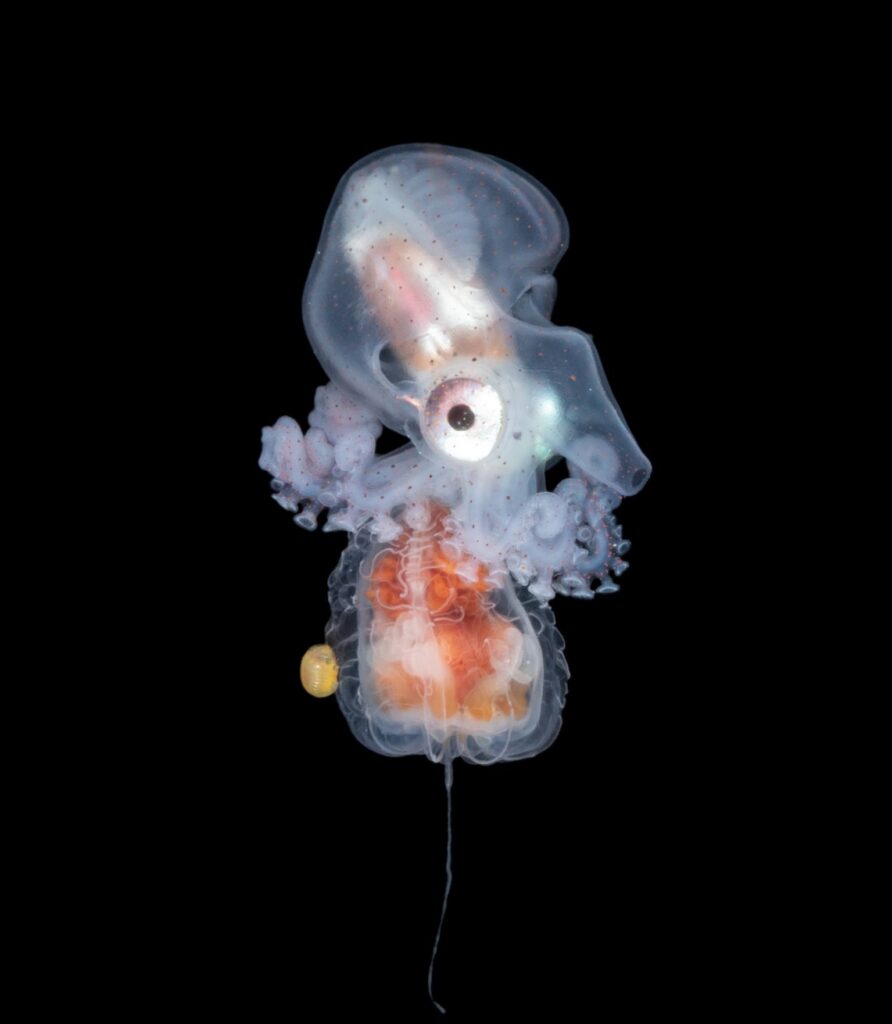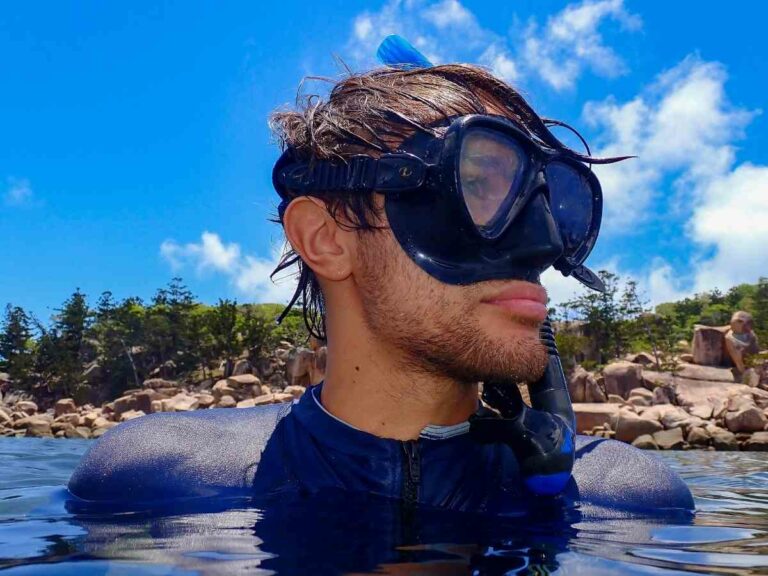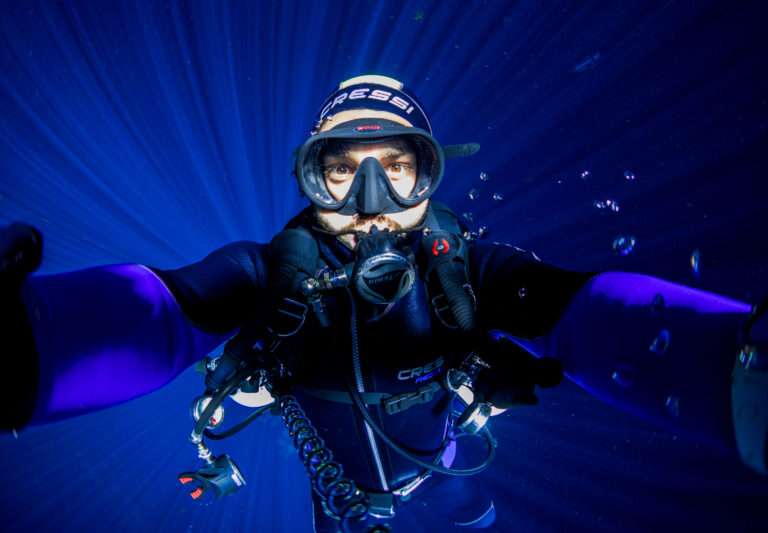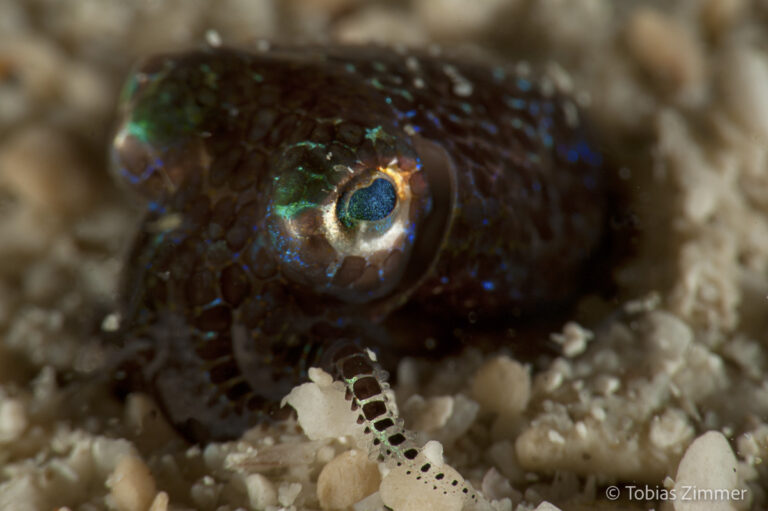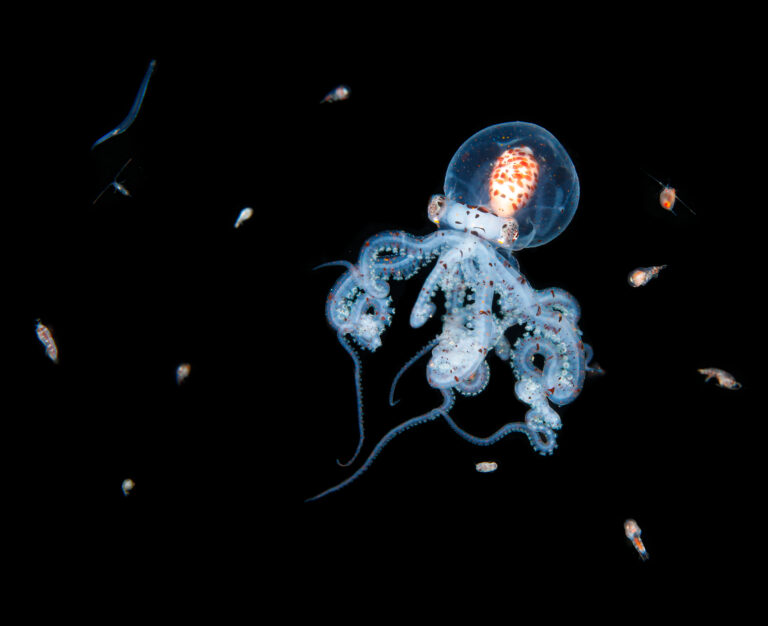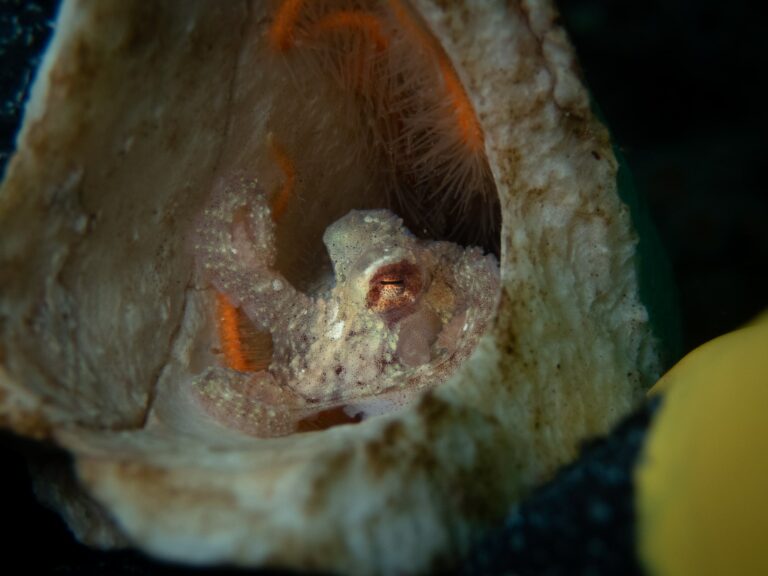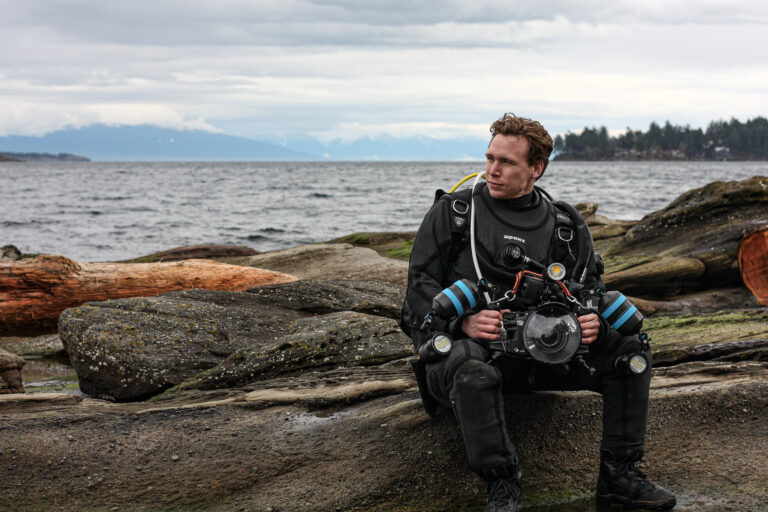‘Cephalotography’ Of The Week: Kat Zhou
Howdy Nation! In today’s post, we are going to be featuring our ‘Photographer Spotlight’ of the week: Kat Zhou. Kat is a passionate underwater photographer who loves to capture the beauty of our oceans. After years of practice and dedication, Kat developed her own unique style, which allows her to capture breathtaking octopus shots from beneath the waves. Let’s take a close look at her work and hear a bit more about Kat.
All photos provided by: Kat Zhou
Meet Kat Zhou!
Kat Zhou is an award-winning photographer who loves underwater, landscape, and wildlife photography. She’s particularly drawn to the underwater world for its diversity and vibrance, and she loves learning about and photographing all forms of marine life.
Outside of photography, Kat works as a software engineer and also runs a trip-planning business that specializes in custom unique adventures around the world. She also loves hiking, cats, craft cocktails, meowing at cats, dancing crazily to 150+ BPM music, aesthetically pleasing bathtubs, and also hugging cats.
Let’s find out more about her octo-photos!

How long have you been an underwater photographer? How did you get started?
“I started underwater photography in 2019 after an ice diving trip to Lake Baikal.
I was blown away by the beauty of the photos that the photographers on the trip captured underwater, and, though I loved my little GoPro Hero 4, it wasn’t doing justice to the magic of the underwater world I was experiencing. I bought a housing for my DSLR once I got home!”

What draws you in or fascinates you the most about the octopus?
“I love watching the way cephalopods change color — I think it’s one of the most mesmerizing things to watch, and it’s impossible to describe how cool it is to people who haven’t seen it through videos or in person.”

Where do you mainly dive and take underwater photos? How often do you go?
“The place I visit most often to dive is West Palm Beach, Florida.
Though it’s a bit of a trek from where I live, I love the variety of marine life that can be seen and photographed around that area, and there’s an amazing community of underwater photographers. I try to visit at least 3 times a year.”
What are the unique challenges you face when photographing cephalopods compared to other marine life, given their incredible camouflage and quick movements?
“Their incredible camouflage and quick movements are in of themselves the two biggest challenges!
On reefs, they blend in well to their environments, which can create difficulty in isolating these subjects from their backgrounds in photographs. Furthermore, because they can move quickly and in unpredictable ways, keeping up with them can be a workout!
All of these things make it extra rewarding when I do get a photo that I’m happy with.”

What equipment and techniques do you use to obtain epic, high-quality images of cephalopods in their underwater environment, given the challenging lighting conditions and their elusive nature?
“For smaller cephalopods, using a snoot can be a great way to isolate the subject, as long as they aren’t moving too quickly. I also love shooting cephalopods on blackwater night dives, as the black backgrounds really contrast against the beautiful colors of the cephalopods you can find.
And in general, every individual has its own personality, and some are more calm and curious than others; if one isn’t cooperating, it’s best to move on and try to find another one instead of chasing or harassing any single subject.”

Cephalopods are known for their intelligence and problem-solving abilities. Have you had any notable interactions with them that showcase these traits?
“Absolutely! For example, watching the way that coconut octopuses use shells as tools to protect themselves definitely showcases their intelligence and self-awareness — I saw one once with 4 shells, and even though it was moving around a little, it always figured out exactly how to position its shells so that they overlapped nicely.”

How do you ensure that your presence does not disturb or negatively impact your subjects and their natural environment during your photography sessions?
“I think it’s important to always be aware of your own buoyancy and control and to recognize no shot is worth harming an animal or its surrounding environment for.
Sometimes if a creature isn’t in an ideal location or pose for a photo, I’ll sit with it and watch it, sometimes even for an entire dive, to get it used to my presence and to see if it’ll move into a better position for a photo.
Octopuses that are hiding will sometimes come out and showcase incredible behavior if you simply wait long enough for them to see that you’re not a threat!”
Who (or what) are your biggest influences?
“My friends have always been my biggest influences.
My underwater photographer friends have taught me almost everything I know, and I continue to learn from them and from new people I meet on every trip that I go on. I’m constantly inspired by the photographs my friends capture, and I always appreciate their willingness to share new tricks and tips with me.”

What advice would you give to aspiring underwater photographers who want to explore the world of cephalopods and capture their remarkable beauty?
“Patience is key! Instead of rushing to get photos and move on, sometimes the most beautiful experiences and photos come from calmly observing a subject and paying attention to its habits.
If you observe cephalopods for long enough, you can start predicting their behavior, leading to much more unique photographs and interactions. Sometimes it’s more productive to focus a whole dive on a single subject instead of trying to photograph as many different subjects as possible.”

What’s your most memorable underwater photoshoot?
“There’s way too many to choose from! I love all sorts of diving and underwater experiences, and there’s been so many times where I’ve been brought to tears while underwater by the beauty of what I was experiencing in many different environments.
That being said, if I was to choose only one type of diving to do for the rest of my life, it would definitely be blackwater diving.
It’s such a huge thrill for me every time I find a critter that I haven’t personally seen or photographed before, and I love the challenge of capturing rare fast-moving subjects.”

Are there any particular species of cephalopods that are on your bucket list to photograph?
“One of my bucket list photographs is to capture a Female Blanket Octopus with its “blanket” unfurled!”
**UPDATE (3/1/2024)
“Absolutely thrilled to see my first adult female blanket octopus… Of course, we found her at the very end of the dive, and I had exactly 0 air left in my tank by the time she unfurled her cape, but luckily she was right at the surface!”

What’s the best place for people to discover your work (website, social media)?
“My Instagram account is @katsnaps.art. My website is also full of my photos, www.katsnaps.art/galleries.”

Thank You For Joining Us For Photographer Spotlight!
First, we want to give a big thank you to Kat Zhou for allowing us to showcase these captivating photos on OctoNation. To continue supporting Jen and her photography, make sure to follow them on Instagram @katsnaps.art.

If you want to educate yourself some more about all sorts of different cephalopods, take a look at our encyclopedia. Or, what we call it, our Octopedia!
Connect with other octopus lovers via the OctoNation Facebook group, OctopusFanClub.com! Make sure to follow us on Facebook and Instagram to keep up to date with the conservation, education, and ongoing research of cephalopods.
More Cephalotography to check out:
- ‘Cephalotography’ Of The Week: Eric Wahl
- ‘Cephalotography’ Of The Week: Matt Testoni
- ‘Cephalotography’ Of The Week: Tobias Zimmer
- ‘Cephalotography’ Of The Week: Lawrence Scheele
- ‘Cephalotography’ Of The Week: John Roney
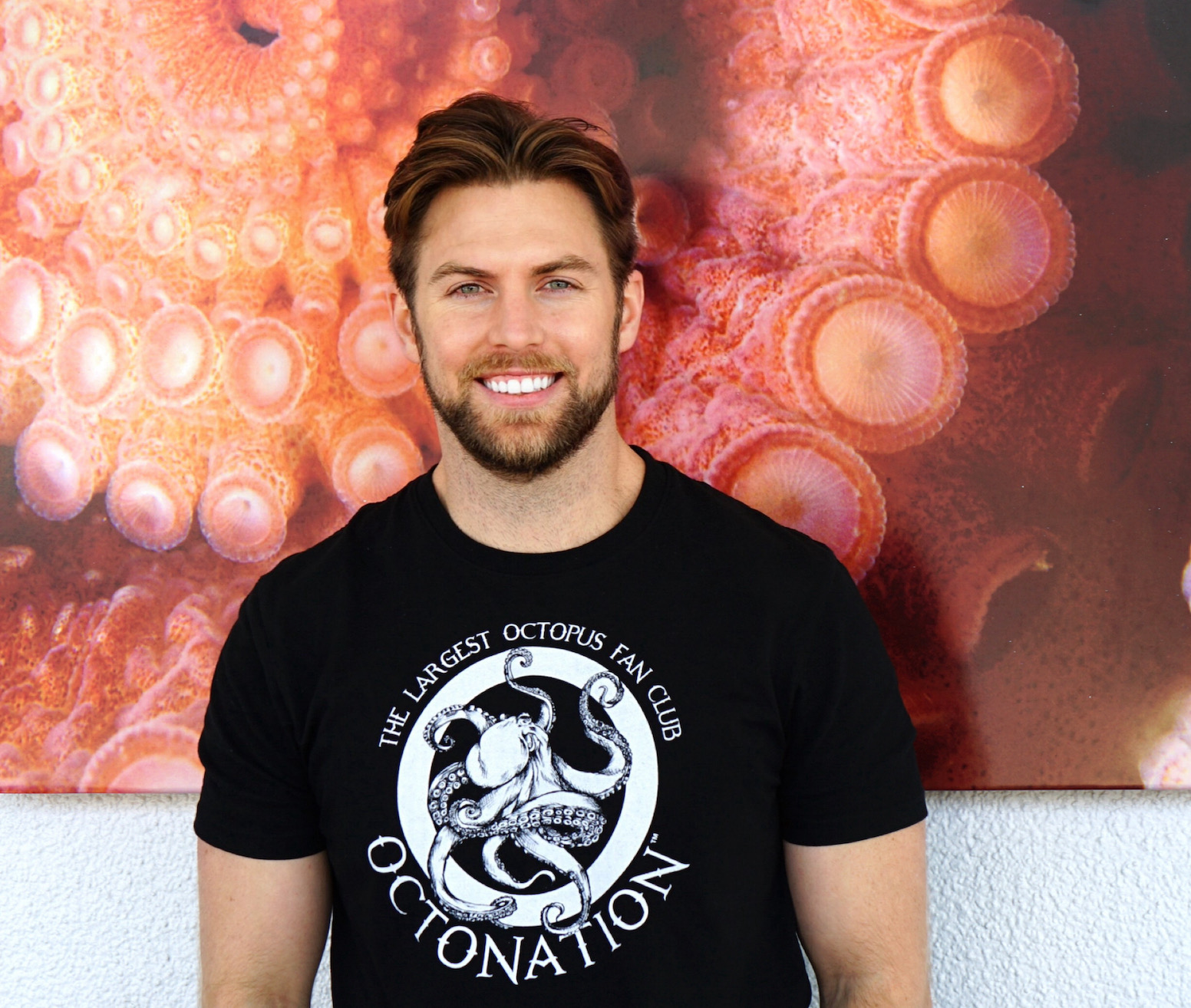
Warren is the Founder of OctoNation, a nonprofit organization that works to inspire the wonder of the ocean by educating the world about octopuses. As a professional community building strategist, Warren has collaborated with hundreds of underwater photographers, artists, scientists, and aquarists to create educational resources for both children and adults.
Jacque Cousteau said it best, “People protect what they love.” OctoNation’s community of over 1 million members wholeheartedly agree! Wanna get involved? Email [email protected]

